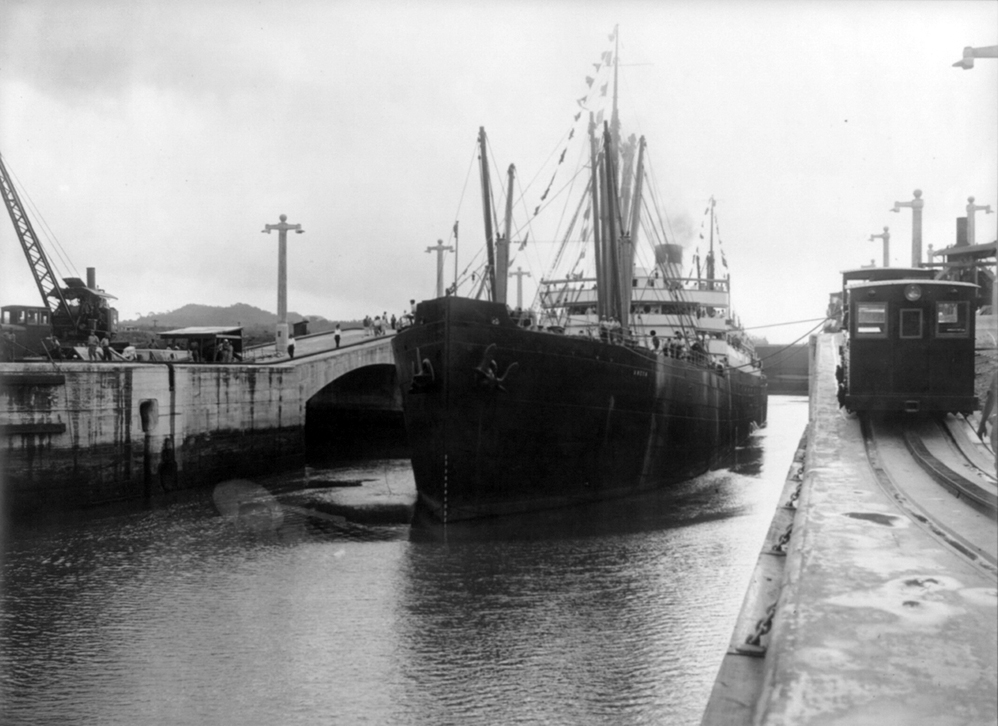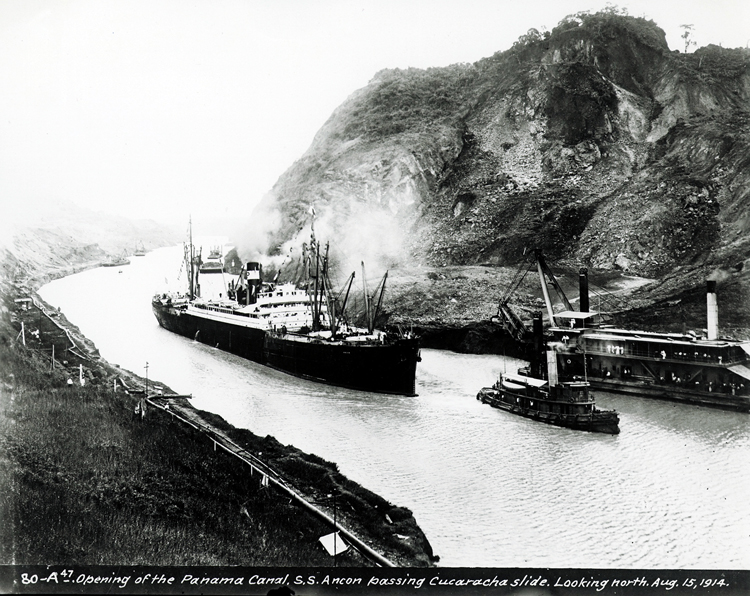 |
| SS Ancon 25th Anniversary voyage |
On August 15, 1914, the SS Ancon made the first official transit of the Panama Canal – traveling from ocean to ocean in under ten hours. Aboard the steamer were dignitaries such as the President of Panama and the American ambassador, but not the chief engineer responsible for completing the canal. Col. George W. Goethals instead traveled ahead of the Ancon via rail car, arriving at each lock to ensure everything was in order for a smooth first passage.
George Goethals graduated second in his West Point class of 1880 and was commissioned into the Army Corps of Engineers. He began his career building bridges, but in 1891 he took charge of completing the Muscle Shoals Canal in Alabama where he built innovative locks with an unprecedented 26-foot lift. In 1903, Goethals joined the Army’s General Staff in Washington, D.C., and quickly impressed Sec. of War William H. Taft. The War Department had overseen Panama Canal construction since 1902, when the United States bought the French holdings there. In 1905, Taft recommended Goethals for an assistant engineer position in Panama, but when the sitting Chief Engineer resigned, Taft instead sent Goethals as a replacement.
 |
| SS Ancon in west locks |
Goethals arrived in Panama in 1907, just after the United States Congress passed legislation favoring a lock canal rather than one at sea level, and his initial priority was devising a strategy to complete the work. The canal would require the world’s largest locks, the largest dam, creation of the world’s largest man-made lake, and it would have to traverse the Continental Divide. Goethals needed inland waterways experts to plan and oversee the works, so he brought in Corps of Engineers colleagues that had experience with such projects. He placed Lt. Col. David D. Gaillard in charge of the Culebra Cut through the Continental Divide, Lt. Col. William Sibert would complete the locks and dam on the Atlantic side, USACE civilian Sydney B. Williamson would complete the locks and dredging on the Pacific side, and Lt. Col. Harry F. Hodges was responsible for the lock designs. Goethals gave his lieutenants freedom to devise their own construction processes, instilling trust but also healthy competition amongst the engineers. He also gave complete support to Dr. William Gorgas of the Army Medical Corps who declared war on mosquitoes and the tropical diseases they carried to ensure a healthy work environment.
 |
| SS Ancon in the Culebra Cut |
By the summer of 1914, Goethals and his team of engineers had nearly completed what many had believed was impossible and the United States began to celebrate the canal. Journalists, politicians, and sightseers flocked to Panama to see the wonder – a 32-mile, 85-foot-above-sea-level bridge of water across the continent. The massive locks contained 4.5 million cubic yards of concrete, the earthen dam that held back Gatun Lake was 1.5 miles long and contained 22 million cubic yards of fill, and the 6,000 men who toiled daily in the Culebra Cut ultimately excavated 182 million cubic yards of earth. On August 15, 1914, after 7 years on the job, George Goethals and the canal were ready for the official opening.
In front of a small crowd, the SS Ancon left Gatun at 7 a.m., and according to passenger John Barrett, proceeded “so quietly that . . . a strange observer coming suddenly upon the scene would have thought that the canal had always been in operation, and that the Ancon was only doing what thousands of other vessels must have done before her.” With Goethals ensuring that each lock and its operators were well-prepared to meet the vessel, the Ancon steamed from Atlantic to Pacific in roughly nine hours, which still holds as the average transit time. As John Barrett accurately observed, the canal began operation as smoothly as it would for a century to come.
To read more, please visit the History Office's full Panama Canal site here.
August 2014